The natural and simple Tuyugou folk houses, the laughing Uygur elderly, the unique-shaped Xinjiang populus euphratica... In the skillful hands of Wang Zhongmin, a master of arts and crafts in Xinjiang, pieces of inconspicuous clay instantly come alive after kneading and pressing, seeming to have their own stories and life.
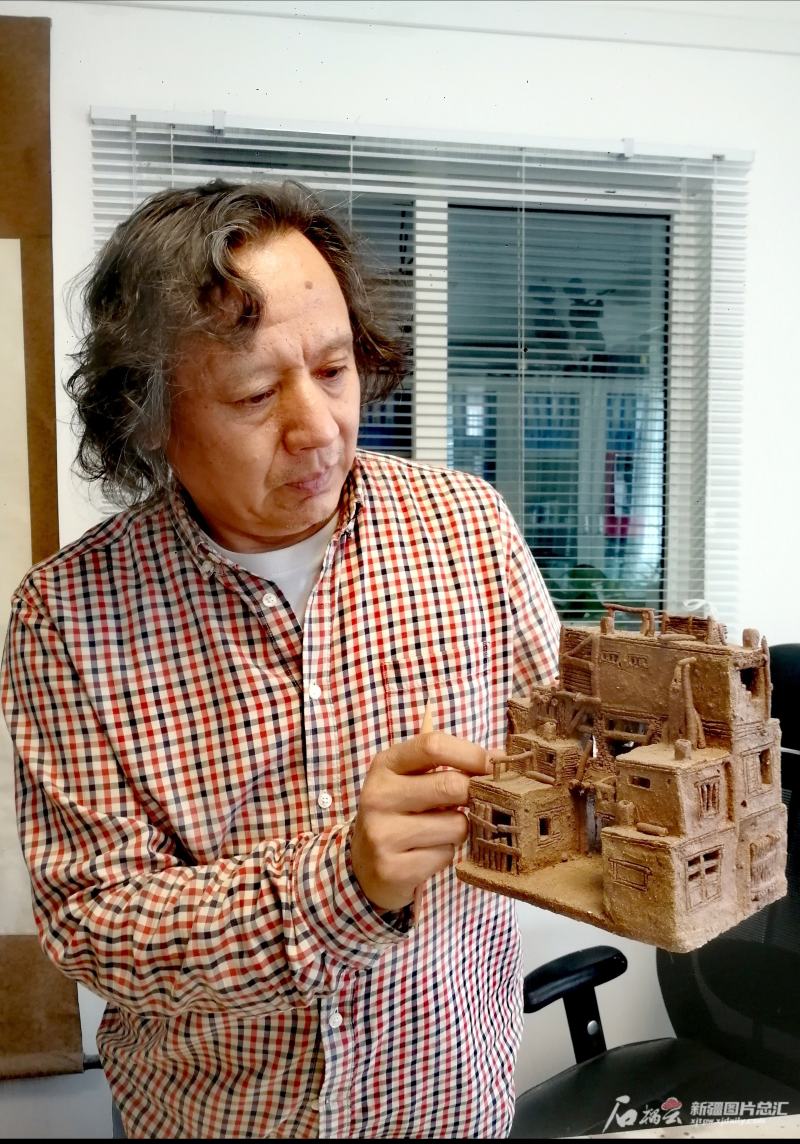
Making clay sculpture is never an easy task for Wang Zhongmin. Photo by Jia Chunxia
Wang Zhongmin, 55 years old, was born in a farmland in Xinjiang. When he was a child, he loved to play with mud with his friends. He gradually became famous for his ability to knead tractors, various small animals, and even movie characters such as “Xiao Bing Zhang Ga”.
In 1990, Wang Zhongmin graduated from the Fine Arts Department of Xinjiang Institute of Education, and went to the Department of Decorative Sculpture of the Central Academy of Arts and Crafts for further study. In 2009, he settled down in the creative industries cluster of 7 Fang Street in Urumqi City, and established the "Wang Zhongmin Sculpture Art Studio", focusing on creation of sculptures, clay sculptures, colored sculptures and pottery sculptures. He created a number of works presenting Xinjiang customs and figures with clay, such as "The beat of the Tianshan Mountain" and "Xinjiang Yakexi".
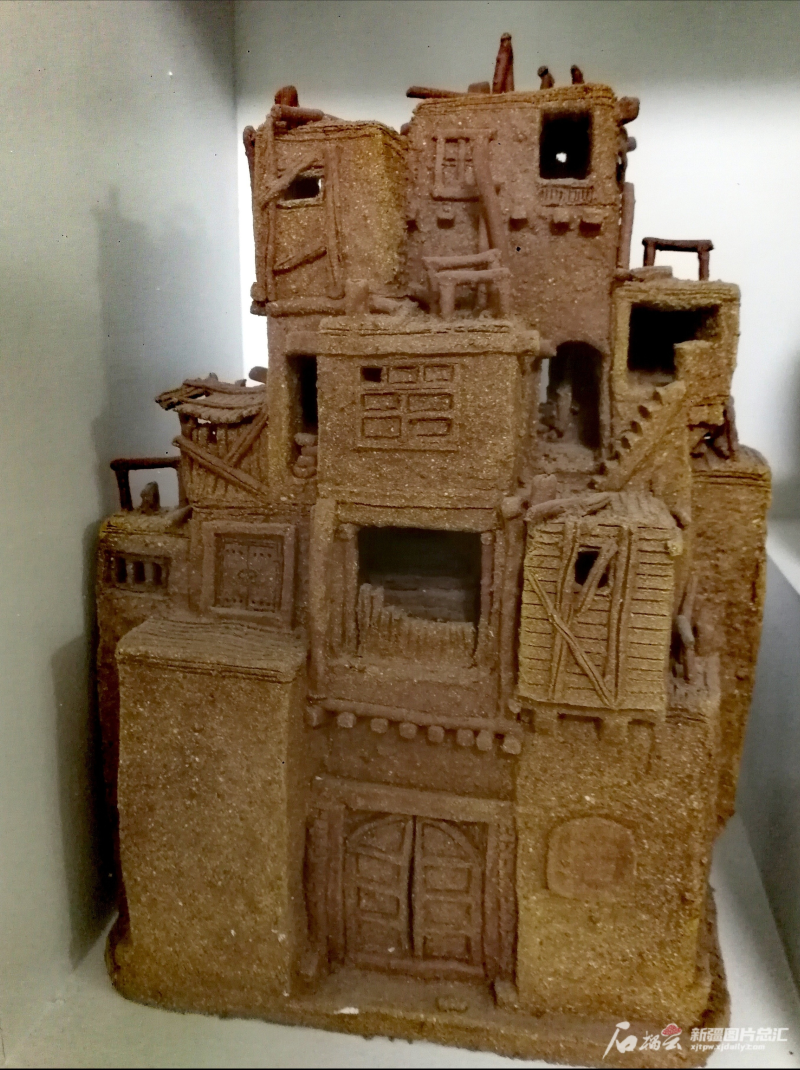
Photo shows a piece of clay sculpture of Wang Zhongmin's folk houses series. Photo by Jia Chunxia
Although Wang Zhongmin has been making clay sculptures for more than 20 years, it was never easy for him to create clay figurines. "Breaking soil, soaking soil, mixing mud, kneading mud, smashing mud, making, drying, firing... Each work has to go through dozens of processes before it can be presented." Wang Zhongmin said, "so that a clay sculpture often takes several days, even dozens of days to complete, and it can’t be done without continuous enthusiasm and perseverance."
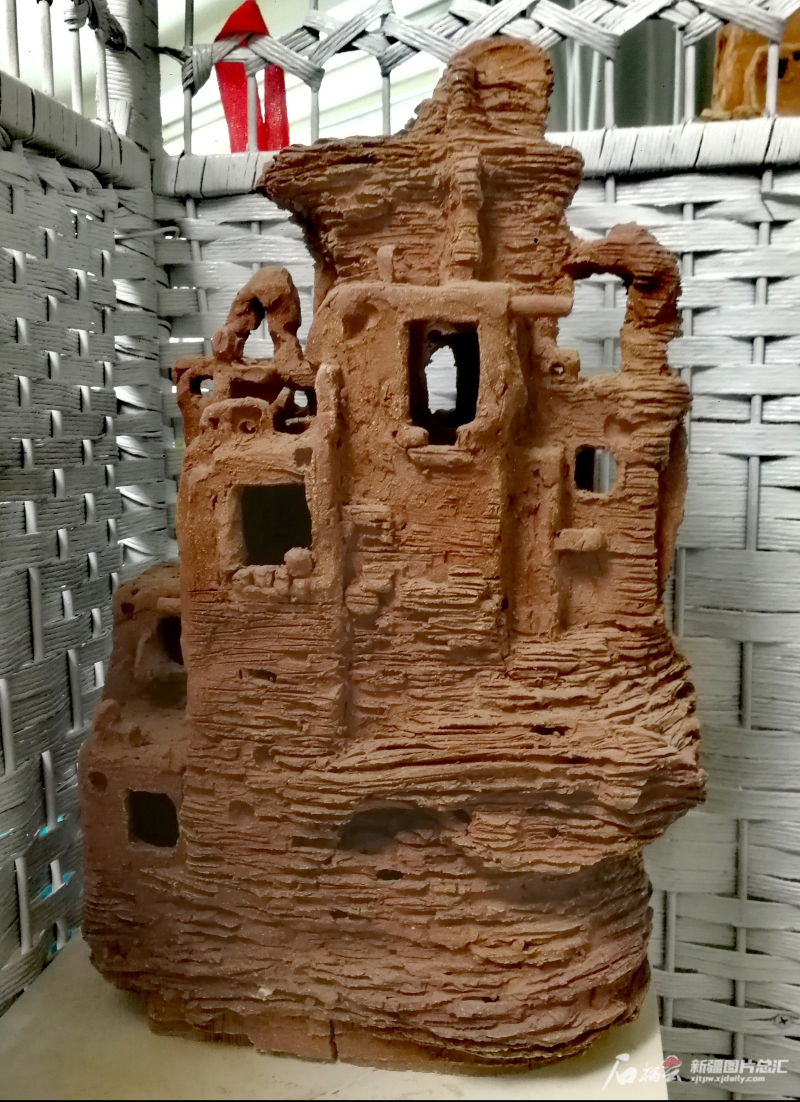
An important feature of Wang Zhongmin's sculpture is that he showcases Xinjiang’s characteristic folk houses through clay sculptures. Photo by Jia Chunxia
In the process of collecting folk elements travelling across Xinjiang, those characteristic folk houses gradually came into Wang Zhongmin's sight, and he began to consciously create a series of works of Xinjiang characteristic folk houses. "In this theme, what I am pursuing is a concept of returning to the nature and living a simple life." In the process of creation, Wang Zhongmin regarded the complex folk houses as a symbolic visual image. He simplified them, and integrated imagination and emotion to creation. "I enjoy the process of creating, it feels as if I am in dialogue with the work."

Lifelike clay sculptures of figures. Photo by Jia Chunxia
In order to better present the characteristics of Xinjiang's folk houses, Wang Zhongmin insisted on using the soil at the foot of the Flaming Mountains in Turpan to create his works. "The red soil here is burned at a high temperature of more than 1,000 degrees. This soil bears the color of the Gobi Desert, which is a symbol of Xinjiang."
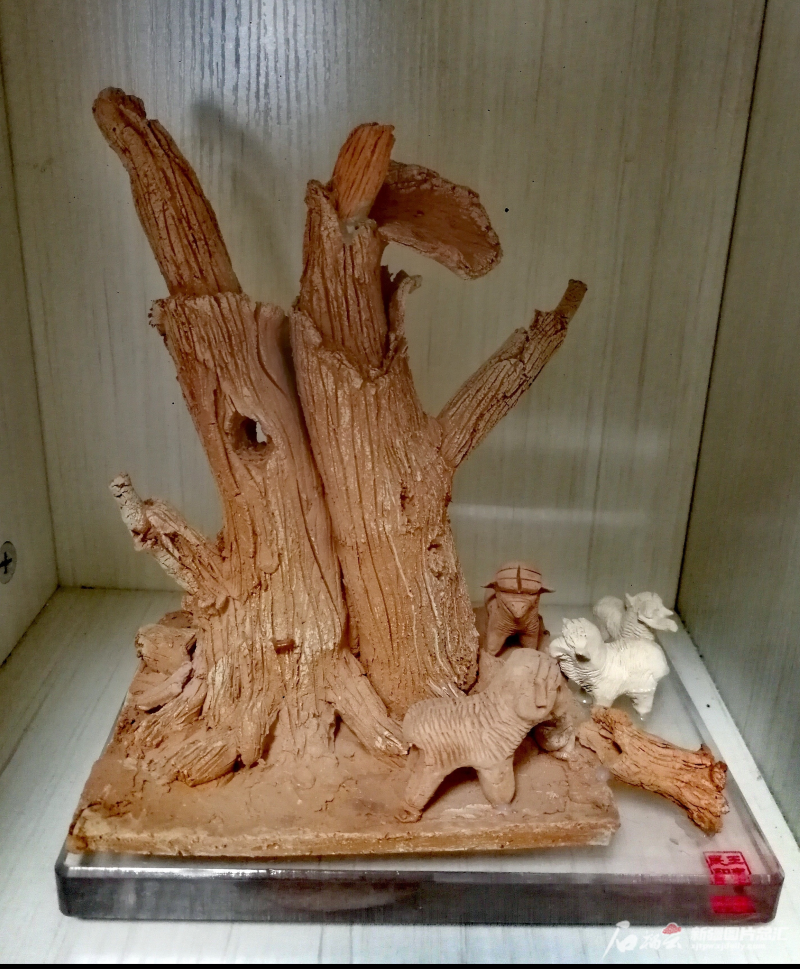
Xinjiang's human geography and folk customs are the main themes of Wang Zhongmin's creation. Photo by Jia Chunxia
"Wang Zhongmin's sculptures are not just some works that replicate the real life subjects, but stand at a spiritual height and embody the awe and respect for the profound and long-standing historical and cultural traditions of Xinjiang, as well as his deep affection for this magical land." Sun Zhenhua, vice president of China Sculpture Institute, spoke highly of him.
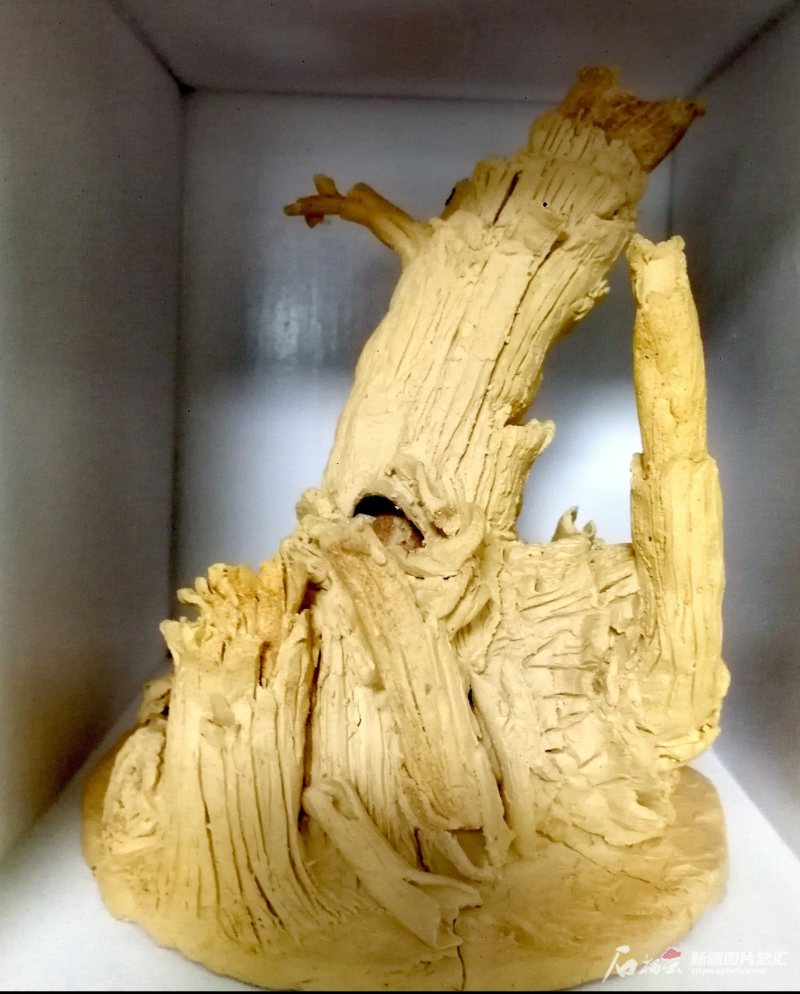
Photo shows one of Wang Zhongming’s works named Xinjiang’s Populus euphratica. Photo by Jia Chunxia
As a Xinjiang’s representative trustee of intangible cultural heritage of clay sculpture, Wang Zhongmin has been paying more attention to inheriting the art of clay sculpture since 2018. Nowadays, he has cultivated more than 100 clay sculpture enthusiasts in the northern and southern Xinjiang, and assisted in the establishment of 3 clay sculpture and ceramic electric kiln studios. "Xinjiang has a vast territory and rich cultural resources. There are many interesting cultural codes hidden in the colorful folk culture. Finding the elements of these cultural codes can open the door to art. I hope that more and more people will fall in love with clay sculpture, and tell the beautiful stories of Xinjiang and convey memories of Xinjiang through clay sculpture." Wang Zhongmin said.
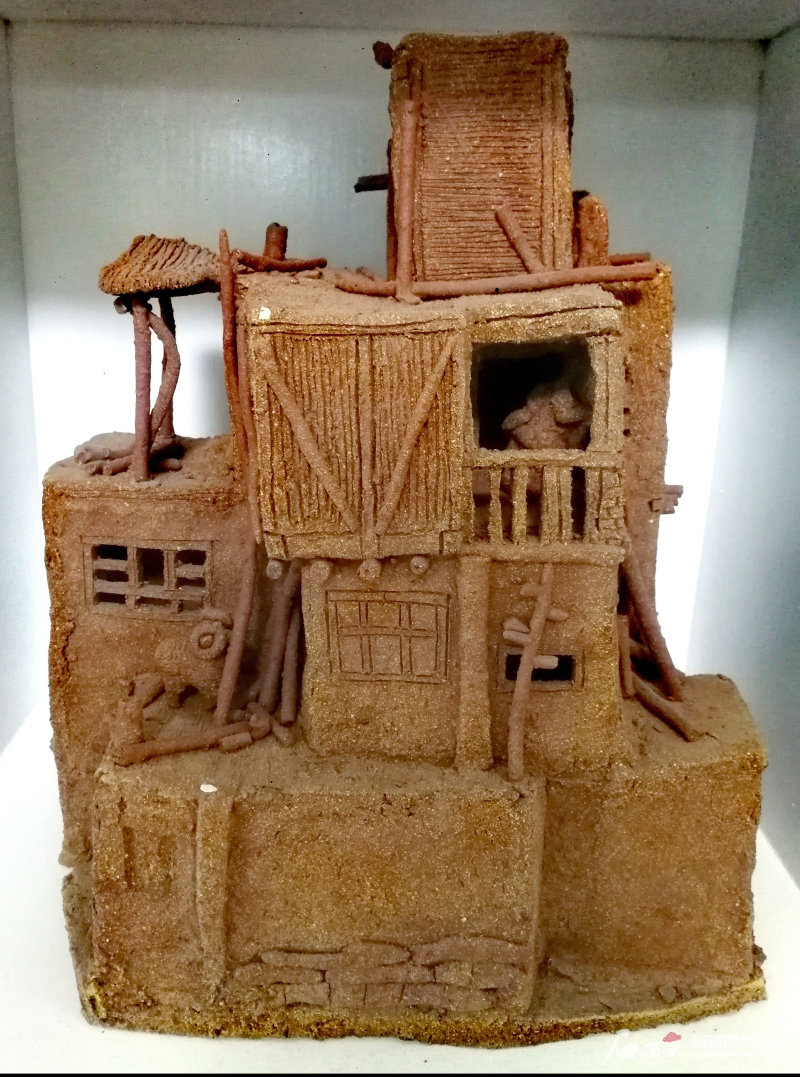
The clay used in Wang Zhongmin's folk houses series comes from the Flaming Mountains of Turpan. Photo by Jia Chunxia









